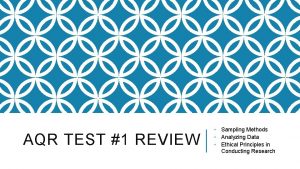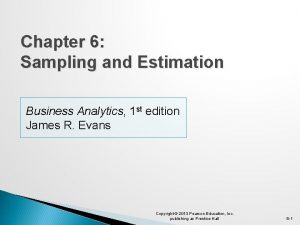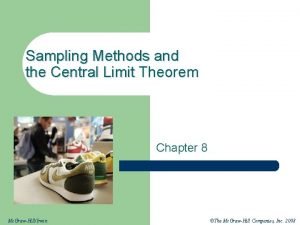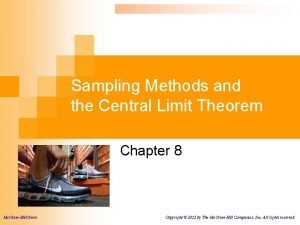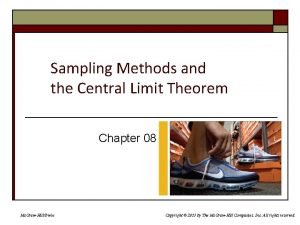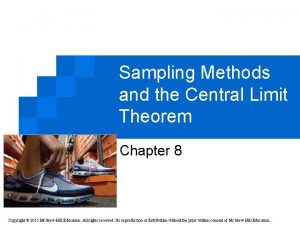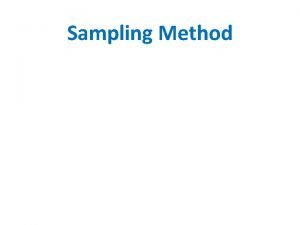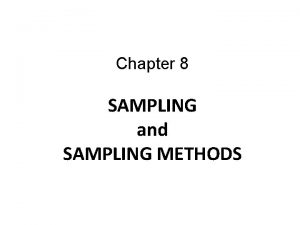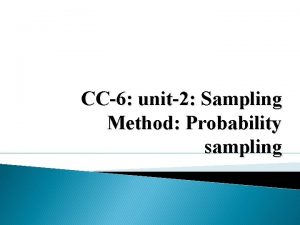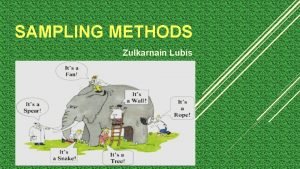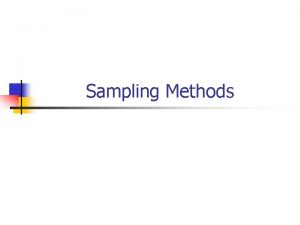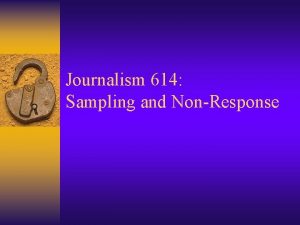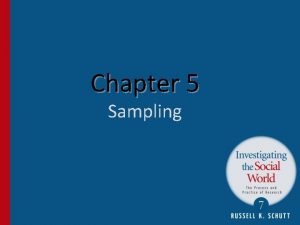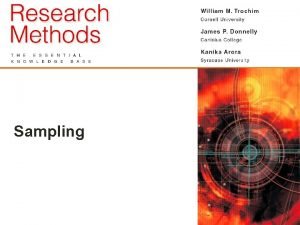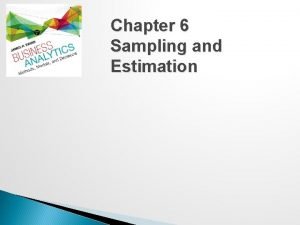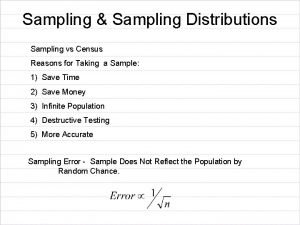AQR TEST 1 REVIEW Sampling Methods Analyzing Data




















- Slides: 20

AQR TEST #1 REVIEW • Sampling Methods • Analyzing Data • Ethical Principles in Conducting Research

SAMPLING METHODS Simple Random Stratified Random Cluster Systematic Census Convenience

SIMPLE RANDOM SAMPLING Each individual is chosen entirely by chance and each member of the population has an equal chance of being included in the sample. Example: Number the desired population and use a random number generator to select participants

SIMPLE RANDOM SAMPLING

STRATIFIED RANDOM SAMPLING A stratified sample is obtained by taking random samples from each stratum or sub-group of a population Example: Suppose a farmer wishes to work out the average milk yield of each cow type in his herd which consists of Ayrshire, Friesian, Galloway and Jersey cows. He could divide up his herd into the four sub-groups and take samples from these.

STRATIFIED RANDOM SAMPLING

CLUSTER SAMPLING The entire population is divided into groups, or clusters, and a random sample of these clusters are selected. All observations in the selected clusters are included in the sample. Example: Suppose that the Department of Agriculture wishes to investigate the use of pesticides by farmers in England. A cluster sample could be taken by identifying the different counties in England as clusters. A sample of these counties (clusters) would then be chosen at random, so all farmers in those counties selected would be included in the sample.

CLUSTER SAMPLING

SYSTEMATIC SAMPLING In a systematic sample, the elements of the population are put into a list and then every kth element in the list is chosen (systematically) for inclusion in the sample. Example: If the population of study contained 2, 000 students at a high school and the researcher wanted a sample of 100 students, the students would be put into list form and then every 20 th student would be selected for inclusion in the sample. To ensure against any possible human bias in this method, the researcher should select the first individual at random.

CENSUS In a census, all of the desired population participates in the study. Example: A teacher wants know if her students prefer tests on Fridays or Mondays. She distributes a survey to all of her students.

CONVENIENCE SAMPLING Convenience sampling is a non-probability sampling technique where subjects are selected because of their convenient accessibility and proximity to the researcher. Example: Choosing the closet five people from a class or choosing the first five names from the list of patients.

CONVENIENCE SAMPLING

ANALYZING DATA Categorical Symmetric Quantitative Skewed Left Univariate Skewed Right Bivariate Center of Distribution Histogram

QUANTITATIVE VS. CATEGORICAL DATA Quantitative: Categorical: Data that is numerical. categories. Data that fits into Examples: age, GPA, annual income color Examples: gender, shirt

UNIVARIATE DATA – ONE VARIABLE

BIVARIATE DATA- TWO VARIABLES

SKEWED LEFT/SKEWED RIGHT

SYMMETRIC HISTOGRAM

CALCULATE THE CENTER OF DISTRIBUTION (AVERAGE SALARY)

SOME ETHICAL GUIDELINES AND PRINCIPLES Honesty Objectivity Informed Consent Respect Intellectual Property Protect Special Populations
 Systematic sampling example
Systematic sampling example Frazzini
Frazzini What is aqr math
What is aqr math Sampling method in research
Sampling method in research Difference between stratified and cluster sampling
Difference between stratified and cluster sampling Stratified random sampling vs cluster
Stratified random sampling vs cluster Contoh observasi event sampling
Contoh observasi event sampling Cluster sampling vs stratified sampling
Cluster sampling vs stratified sampling Non-probability sampling method
Non-probability sampling method Natural sampling vs flat top sampling
Natural sampling vs flat top sampling Volunteer sample vs convenience sample
Volunteer sample vs convenience sample What are the sampling methods in psychology
What are the sampling methods in psychology Sampling and estimation methods in business analytics
Sampling and estimation methods in business analytics Aracr
Aracr Sampling methods and the central limit theorem
Sampling methods and the central limit theorem Sampling methods and the central limit theorem
Sampling methods and the central limit theorem Sampling methods and the central limit theorem
Sampling methods and the central limit theorem Sampling methods and the central limit theorem
Sampling methods and the central limit theorem Sampling methods statistics
Sampling methods statistics Random sampling method in quantitative research
Random sampling method in quantitative research Julias ceasar
Julias ceasar
